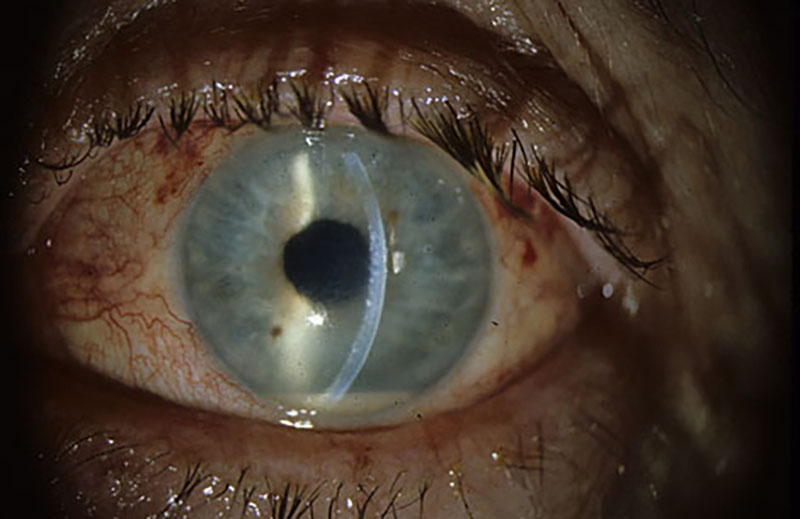A 34-year-old male is referred to the eye clinic for a painful red right eye. He says the eye became red and painful overnight three days ago and has persisted since. He also complains of severe photophobia and blurred vision. There are no symptoms of floaters, flashes, or visual field loss. His past ocular and medical history are unremarkable and there is no recent history of illness.
On exam, best-corrected visual acuity is 6/12 and 6/6 in the right and left eyes, respectively. Intraocular pressures are 18 and 14. Anterior segment exam is shown below: there is diffuse conjunctival injection with ciliary flush. There are also keratic precipitates (KPs), 3+ cell in the anterior chamber, and a 2 mm hypopyon. Posterior segment exam is normal, with no evidence of vitritis.
